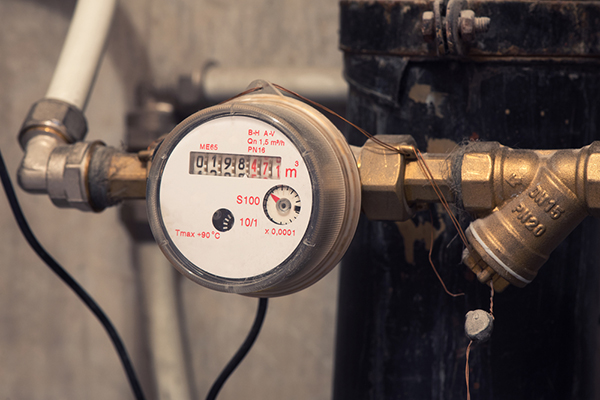Is your water bill a little higher than usual? If it is, you might want to check your water meter. A water meter is what utility companies use to measure the amount of water that is delivered to a property. Understanding how that amount is calculated can help you determine your home’s water usage and if you have a water leak.
How is My Water Bill Calculated?
The units used for measuring water use differ with utility companies across the country. Some utility companies use Centum Cubic Feet (CCF) and some use gallons. The CCF measurement represents one hundred cubic feet of water, and is the most commonly used measurement method. One CCF equals 748 gallons. You can look on your utility bill to see how your water usage is measured. Your water usage is the difference between the current meter reading and the prior meter reading.
Step 1: Locate your Water Meter
First, you’ll need to locate your water meter. Most residential water meters are found outside near the curb or sidewalk at the front of the property. Oftentimes, the meter will have a metal or plastic lid and may be marked. If you have difficulty finding your water meter, contact your utility company for help. In some cases, you may need a screwdriver to open the lid.
Step 2: Understand your Water Meter
Next, you’ll need to determine whether your meter is analog or digital.
Analog Water Meter
Analog meters will have dial displays. If you have an analog display, your meter will have a sweep hand that measures the water usage in either CCF or gallons. Most analog dials also have a low flow indicator that looks like a small icon, such as a triangle.
Digital Display Water Meter
If your meter has a digital display, you may need a flashlight to activate it. Most digital displays will alternate between the reading (CCF or gallons used) and the flow rate (CCF or gallons flowing through per minute). Some digital displays may have historical water use data. If you have any questions about your analog or digital meter, check your water bill or utility company’s website for more information, or contact them with questions about how to read your particular meter.
Step 3: Perform a Leak Detection Test
To determine if you might have a continuous leak that is increasing your water usage and making your bill higher, you can perform a leak detection test using your meter.
To do this, first make sure that no water using devices are operating inside or outside of your home during the test. For analog meters, if the sweep hand or the low flow indicator is moving, a leak is indicated. To determine if you have a slow leak on an analog meter, record the readings and wait 20 minutes before reading again. If there are any gallons used, a leak is indicated. For digital display meters, watch the flow rate screen for at least 10 flashes. If the number is more than zero, a leak is indicated. You can also perform a check for a slow leak in the same manner as for an analog meter.
If you don’t have a leak but are still concerned about your water usage, you might want to take a look at your household consumption. According to the United States Environmental Protection Agency (EPA), the average American uses around 100 gallons per day per person in the household, which means a family of four would use about 12,000 gallons a month. Keep in mind that usage varies widely depending on lawn water use and daily habits.
